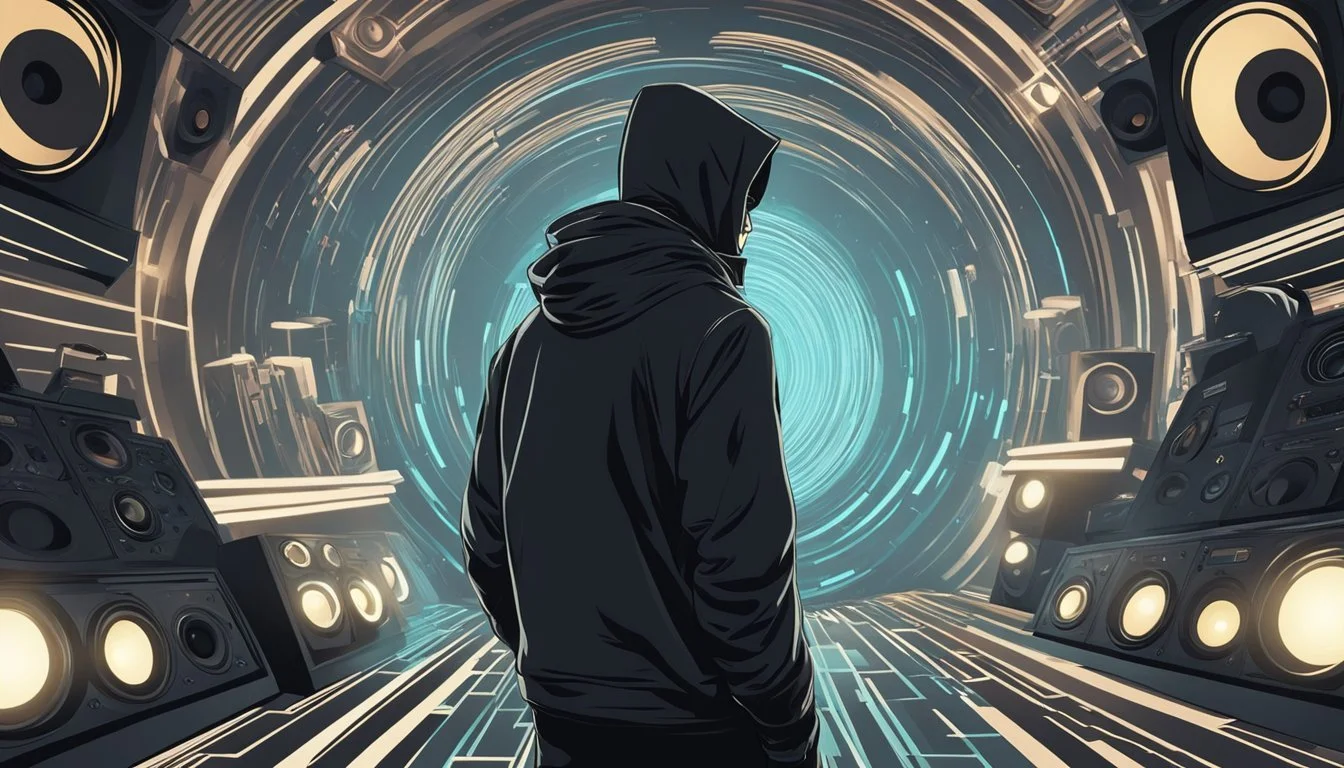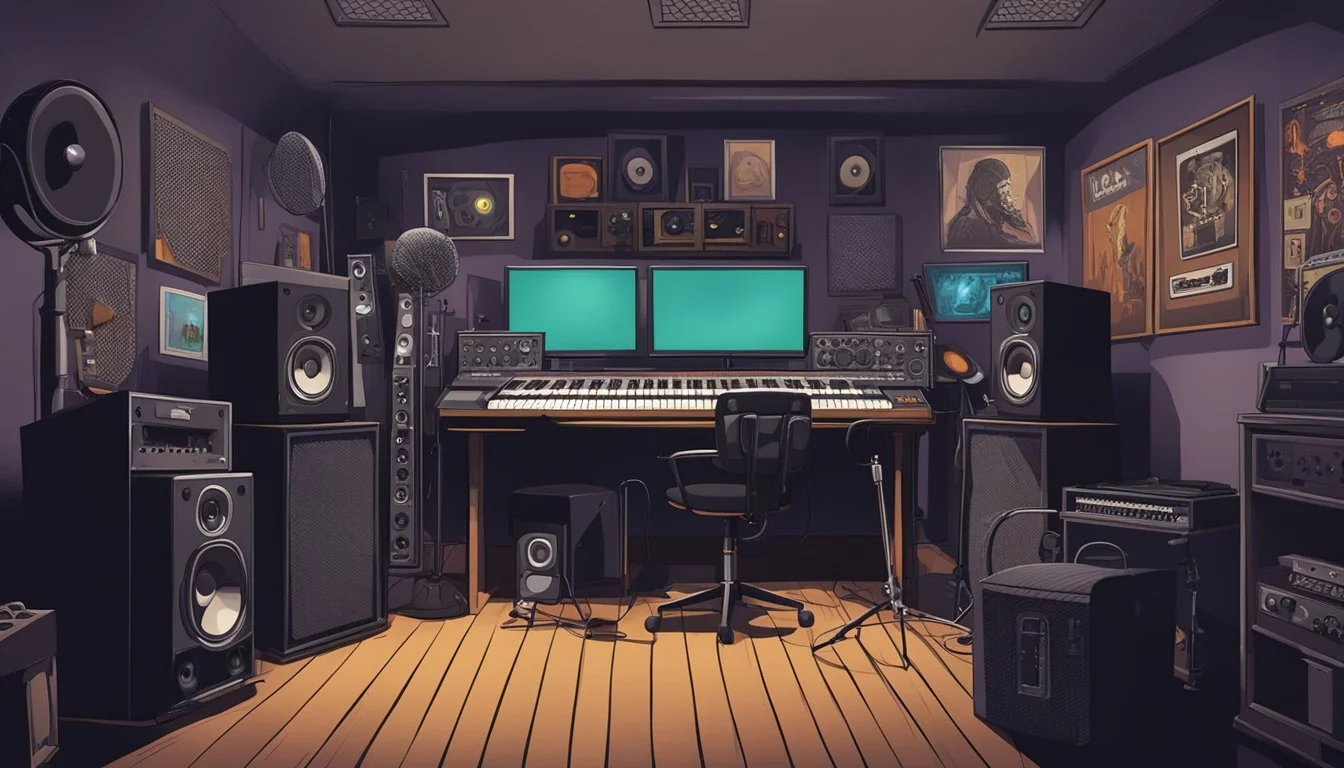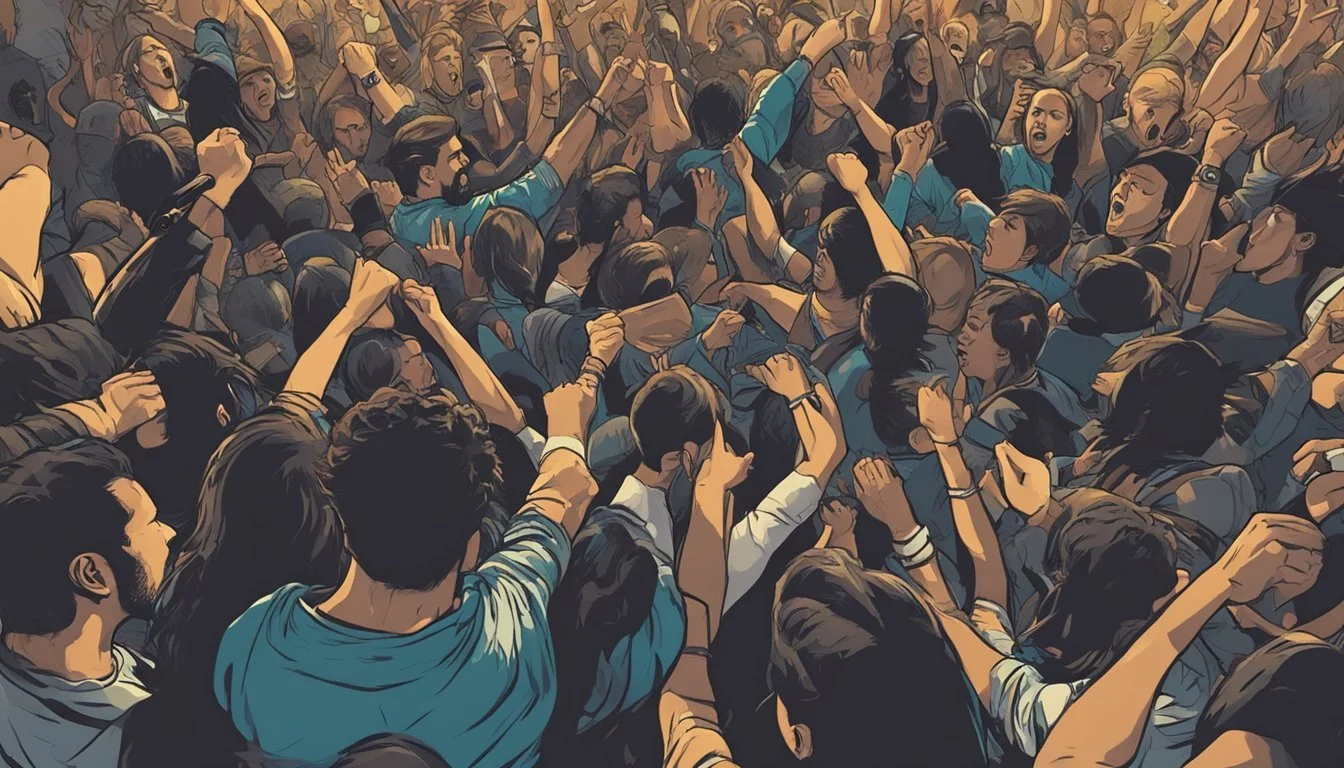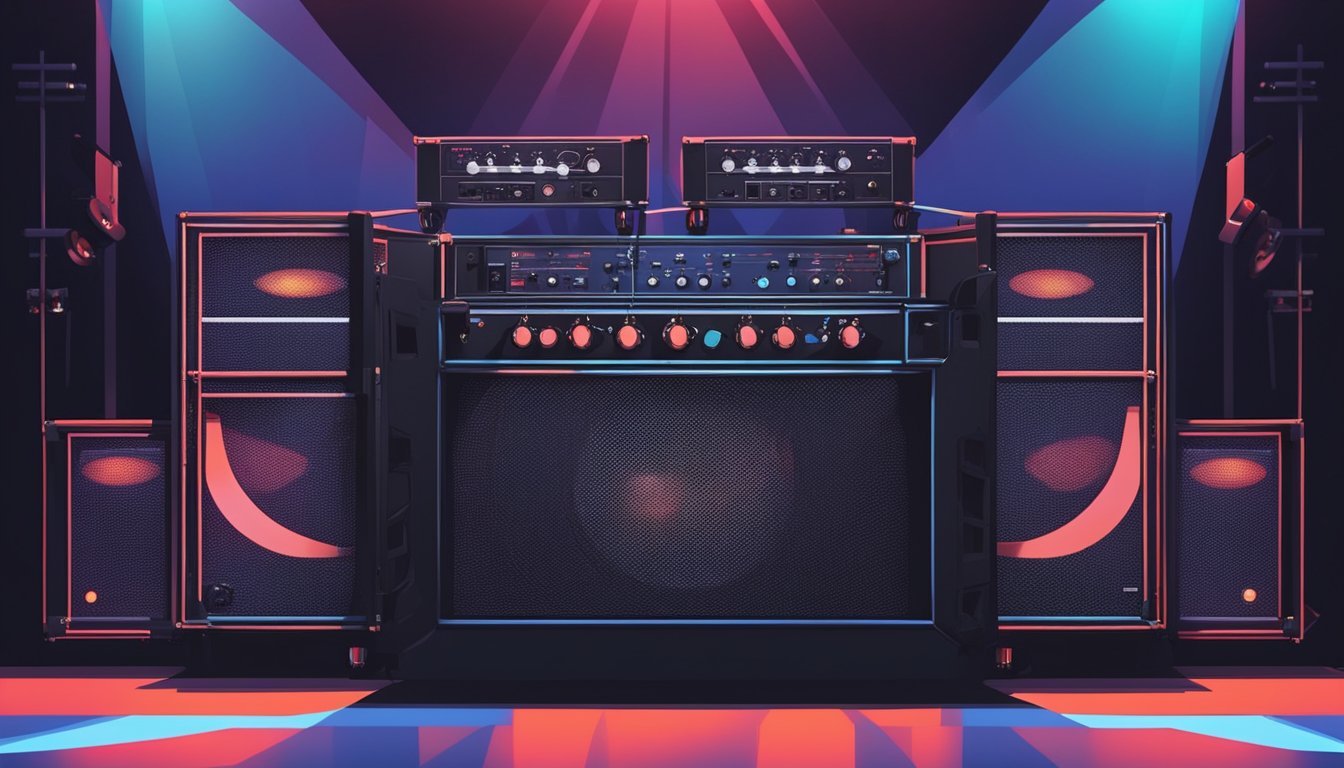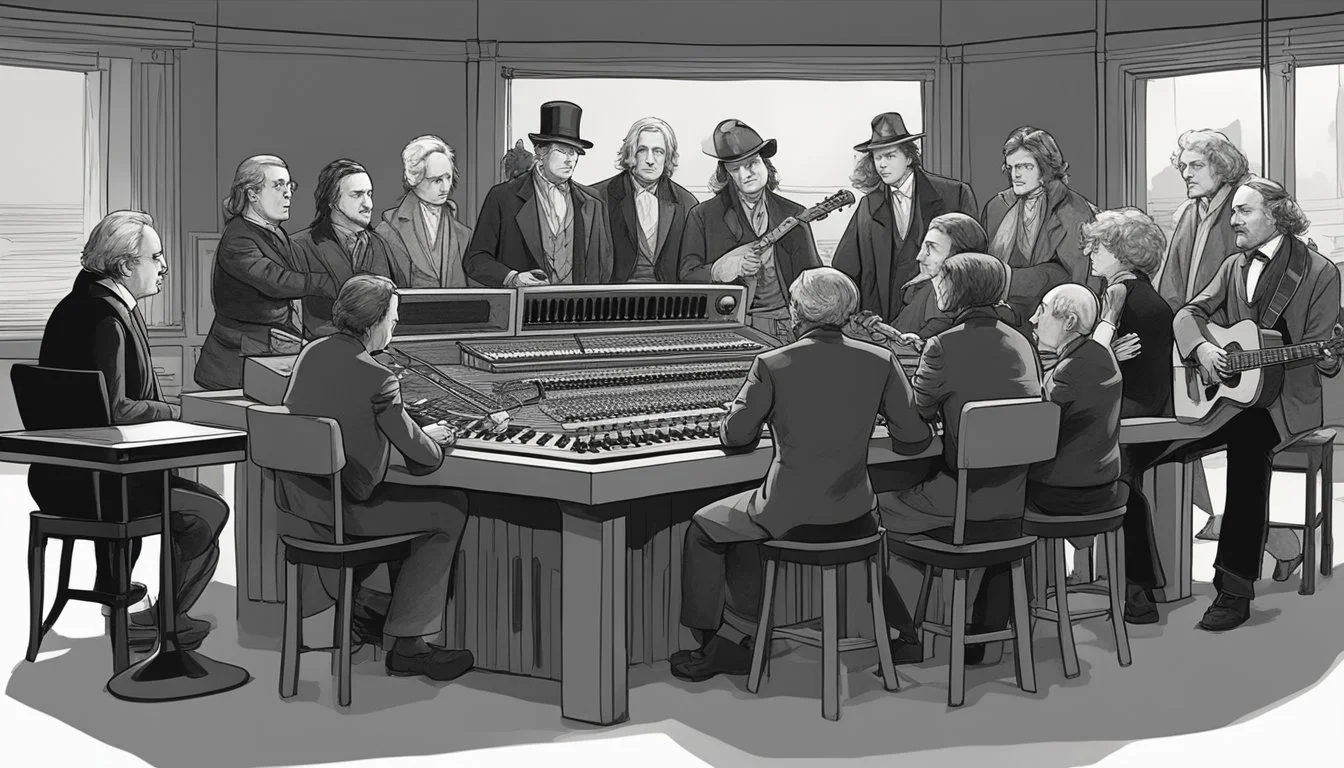Analyzing the Sound Design and Music in American Nightmare
Crafting Tension Through Audio
The chilling documentary series "American Nightmare" captivates viewers not only with its shocking true crime narrative but also through its masterful use of sound design and music. These auditory elements play a crucial role in building tension, evoking emotions, and enhancing the overall viewing experience.
Jessica Jones, known for her work on other Netflix productions, composed the haunting score for "American Nightmare." Her music underscores the unsettling nature of the case, which involves a kidnapping initially dismissed as a hoax by authorities. The soundtrack weaves together atmospheric tones and suspenseful motifs, reflecting the twists and turns of the investigation.
Sound design in "American Nightmare" goes beyond the musical score, incorporating ambient noises and strategic silences to heighten the sense of unease. These auditory choices complement the visual storytelling, immersing viewers in the harrowing experiences of the victims and the frustrations of those seeking justice. By analyzing the sound design and music in "American Nightmare," we gain deeper insights into how audio elements shape our perception of true crime narratives.
Origins and Evolution of American Nightmare
American Nightmare emerged on the hardcore punk scene in 1999 in Boston, Massachusetts. The band was initially formed by Wes Eisold, Tim Cossar, and Jesse Van Diest.
Their early sound blended elements of hardcore punk with emotional intensity and introspective lyrics. This unique approach quickly gained them a devoted following in the underground music scene.
In 2001, American Nightmare released their debut full-length album "Background Music." The record showcased their raw energy and Eisold's poetic, angst-ridden lyrics.
Following legal issues over their name, the band briefly operated under the moniker "Give Up the Ghost" from 2003 to 2004. This period saw them release their second album, "We're Down Til We're Underground."
American Nightmare's sound evolved over time, incorporating more melodic elements while maintaining their hardcore roots. Eisold's distinctive vocal style and thought-provoking lyrics remained central to their identity.
The band's influence on the hardcore and punk scenes grew significantly in the early 2000s. Their intense live performances and emotionally charged music resonated with fans across the globe.
After a hiatus, American Nightmare reunited in 2011, reigniting interest in their catalog and introducing their music to a new generation of listeners.
Thematic Elements and Lyricism
The sound design and music in "American Nightmare" weave together intricate thematic elements that enhance the game's psychological horror atmosphere. Dream-like qualities permeate the audio landscape, blurring the lines between reality and nightmare.
"Colder Than Death" stands out as a haunting track that captures the game's chilling ambiance. Its sparse instrumentation and eerie melodies evoke a sense of isolation and impending doom.
Lyricism plays a crucial role in conveying the game's themes. "Flowers Under Siege" features poetic verses that metaphorically represent the protagonist's inner turmoil and the fragile nature of sanity in a hostile world.
The game's soundtrack explores the concept of a "Crisis of Faith" through somber tones and introspective compositions. These pieces reflect the characters' struggles with belief and purpose in the face of overwhelming darkness.
"Lower Than Life" exemplifies the game's ability to create a sense of despair through sound. Its oppressive bass tones and discordant harmonies mirror the psychological weight of the game's narrative.
Recurring musical motifs tie together different aspects of the game, creating a cohesive audio experience. These thematic elements serve to reinforce the game's core themes of fear, survival, and the human psyche under extreme duress.
Impact on Hardcore and Post-Punk Genres
American Nightmare's sound design and music bridged hardcore punk intensity with post-punk atmosphere. The band incorporated elements from both genres to create a distinctive sonic identity that influenced subsequent artists.
Contribution to Hardcore
American Nightmare pushed hardcore's boundaries by infusing it with darker, more introspective themes. Their aggressive riffs and pounding drums maintained hardcore's raw energy, but the band added layers of complexity to the genre's typical sound. Vocals alternated between harsh screams and cleaner singing, expanding hardcore's emotional range.
The band's use of dissonant guitar tones and unconventional song structures challenged listeners' expectations of hardcore records. This approach inspired other artists to experiment with the genre's sonic palette.
Influences from Post-Punk
American Nightmare drew inspiration from post-punk pioneers like Joy Division and Bauhaus. They incorporated atmospheric elements and moody textures reminiscent of these bands into their hardcore foundation. Reverb-drenched guitars and haunting melodies created a sense of tension and unease throughout their songs.
The band's lyrics explored themes of alienation and existential dread, echoing the introspective nature of post-punk. This lyrical approach, combined with their musical style, helped bridge the gap between hardcore's aggression and post-punk's brooding sensibilities.
Sound Design in Live Performances and Recordings
Sound design plays a crucial role in shaping the auditory experience for both live performances and recorded music. It involves careful consideration of acoustics, equipment, and techniques to create immersive soundscapes.
Recording Techniques
Recording techniques have evolved significantly over the years. Studios like Mystic Valley Recording Studio utilize state-of-the-art equipment to capture high-quality audio. Multi-track recording allows for separate instrument and vocal layers.
Microphone placement is critical for optimal sound capture. Engineers often experiment with different mic types and positions to achieve the desired tone. Sound-absorbing materials in recording booths help minimize unwanted reflections.
Digital audio workstations (DAWs) have revolutionized the editing process. They enable precise adjustments to timing, pitch, and effects. Bands like Ten Yard Fight benefit from these tools to refine their hardcore punk sound.
Live Sound Dynamics
Live performances present unique challenges for sound designers. Venue acoustics greatly impact the overall sound quality. Sound engineers must adapt their setups to each space.
Front-of-house mixing requires real-time adjustments to balance instruments and vocals. Monitor systems ensure performers can hear themselves clearly on stage. Feedback suppression is essential to prevent unwanted squeals.
Advanced speaker systems distribute sound evenly across venues. Line arrays provide consistent coverage for large crowds. Subwoofers enhance low-end frequencies for a fuller sound experience.
Digital mixing consoles offer preset recall and remote control capabilities. This allows for quick transitions between acts at festivals or multi-band shows. Sound designers must also account for crowd noise and environmental factors in outdoor settings.
The Band's Reformation and New Chapters
American Nightmare disbanded in 2004 after a tumultuous period of lineup changes and legal issues. The breakup left fans wondering if they'd ever hear new music from the influential hardcore punk band.
In 2011, the group briefly reunited for a series of shows under the name "Give Up the Ghost" due to ongoing legal disputes over their original name.
2017 marked a true new start for American Nightmare. The band officially reformed with core members Wesley Eisold, Tim Cossar, and Alex Garcia-Rivera.
Their self-titled comeback album "American Nightmare" was released in February 2018. It marked their first new material in 15 years.
The album showcased a mature evolution of their sound while staying true to their hardcore roots. Tracks like "The World Is Blue" and "Gloom Forever" resonated with both longtime fans and new listeners.
American Nightmare's reformation breathed new life into the hardcore scene. Their return demonstrated the enduring impact of their earlier work and their ability to remain relevant in a changing musical landscape.
American Nightmare in Media
American Nightmare has made a significant impact in media, particularly in true crime documentaries and television soundtracks. Its portrayal in various formats has shaped public perception and contributed to the genre's popularity.
Inclusion in True Crime Series
Netflix's true crime documentary series "American Nightmare" has garnered attention for its gripping storytelling. The show delves into a perplexing case of home invasion and abduction that initially baffled law enforcement. Its narrative explores the complex interplay between real events and media representations.
The series examines how preconceived notions can influence investigations. It highlights the challenges faced by victims when their accounts seem implausible to authorities. This true crime documentary showcases the power of media in shaping public opinion and legal outcomes.
Soundtracking for Television
Jessica Jones, a renowned composer, has crafted the soundtrack for Netflix's "American Nightmare" series. Her work enhances the viewing experience by creating an atmospheric backdrop to the unfolding events. Jones' musical compositions contribute to the tension and emotional depth of the documentary.
The soundtrack plays a crucial role in setting the tone for each episode. It helps to convey the psychological elements of the case and heighten dramatic moments. Jones' previous experience with true crime documentaries, such as "Jimmy Savile: A British Horror Story," has likely informed her approach to scoring "American Nightmare."
The Band's Legacy and Influence
American Nightmare's impact extends beyond their music, shaping the hardcore scene and inspiring future artists. Their unique sound and raw energy left an indelible mark on the genre.
Cultural Impact
American Nightmare's influence permeated hardcore culture, fashion, and attitudes. Their aggressive yet introspective lyrics resonated with fans, creating a devoted following. The band's aesthetic, characterized by stark black and white imagery, became iconic within the scene.
Their albums, particularly "Background Music" and "We're Down Til We're Underground," are considered classics. These records helped redefine hardcore's sound, incorporating elements of post-punk and emo.
American Nightmare's live shows were legendary for their intensity. These performances set a new standard for hardcore concerts, inspiring countless bands to push their live acts to new heights.
Inspiration for Upcoming Artists
American Nightmare's innovative approach to hardcore inspired a generation of musicians. Their blend of raw aggression and emotional depth influenced bands like Touché Amoré and Defeater.
Many artists cite American Nightmare as a key influence, praising their songwriting and passionate delivery. The band's willingness to experiment within the hardcore framework encouraged others to push genre boundaries.
Their impact is evident in the resurgence of hardcore-influenced bands in recent years. American Nightmare's legacy lives on through the artists they've inspired, ensuring their sound echoes forever in the hardcore scene.
Collaborations and Side Projects
Josh Holden, Brian Masek, and Garcia-Rivera explored creative ventures beyond American Nightmare. Their collaborative works and side bands enriched their musical experiences and influenced their sound design approaches.
Side Bands and Ventures
Josh Holden formed the experimental electronic group Neon Skies in 2019. The project allowed him to explore ambient soundscapes and glitch-inspired rhythms. Brian Masek joined the indie rock band Crimson Echoes as a guitarist in 2020, contributing to their critically acclaimed album "Midnight Whispers."
Garcia-Rivera launched a solo career under the moniker "Sonic Architect" in 2021. His debut EP "Frequencies Unbound" showcased his skills in sound manipulation and electronic composition.
Collaborative Works in Music
The trio engaged in various collaborative projects with other artists. Holden produced tracks for up-and-coming hip-hop artists, infusing his signature atmospheric sounds into their work. Masek collaborated with classical composer Elena Romanov on a genre-blending orchestral piece titled "Digital Symphony."
Garcia-Rivera partnered with visual artist Maya Chen to create an immersive audio-visual installation called "Soundwaves in Color." The project combined his intricate sound design with Chen's vibrant digital art, earning praise at several art galleries.
American Nightmare and the Future of Hardcore Music
American Nightmare's impact on the hardcore music scene extends beyond their own discography. Their intense sound and uncompromising approach have influenced a new generation of bands.
The group's 2018 self-titled album showcased their ability to evolve while maintaining their hardcore roots. This release demonstrated how established acts can push the genre forward.
American Nightmare's lyrics often explore themes of existential dread and societal alienation. These topics resonate with many hardcore fans and continue to be relevant in the genre.
The band's use of melodic elements within their aggressive sound has inspired other artists to experiment with similar techniques. This trend is likely to shape the future direction of hardcore music.
American Nightmare's reunion and continued activity have revitalized interest in early 2000s hardcore. This renewed attention may lead to a resurgence of similar styles within the genre.
The group's ability to attract both long-time fans and new listeners demonstrates the enduring appeal of authentic, passionate hardcore. This bodes well for the genre's future sustainability.
As hardcore continues to evolve, bands like American Nightmare serve as a bridge between its roots and potential new directions. Their influence will likely be felt in the scene for years to come.
Key Figures in American Nightmare's History
Several individuals played crucial roles in shaping American Nightmare's sound and legacy. Their contributions and personal journeys significantly influenced the band's development and impact on the hardcore punk scene.
Biographical Insights
Wes Eisold, the lead vocalist and primary songwriter, founded American Nightmare in 1998. Born into a military family, Eisold's nomadic childhood influenced his introspective lyrics and raw emotional delivery.
Josh Holden joined as the band's guitarist, bringing a distinctive playing style that helped define their sound. His background in Boston's hardcore scene proved invaluable to the group's evolution.
Brian Masek took on bass duties, providing a solid foundation for the band's aggressive sound. His technical proficiency and stage presence became integral to American Nightmare's live performances.
Contributions to the Music Industry
Eisold's poetic and often cryptic lyrics set American Nightmare apart from their contemporaries. His words resonated deeply with fans, addressing themes of alienation and existential angst.
Holden's guitar work blended hardcore aggression with melodic elements, influencing countless bands in the genre. His riffs became a hallmark of American Nightmare's sound.
Masek's bass lines added depth and intensity to the band's compositions. His contributions helped create the driving force behind American Nightmare's powerful live shows.
Garcia-Rivera's drumming brought a relentless energy to the band's performances. His precise yet chaotic style perfectly complemented the group's intense musical approach.
Home Invasion and True Crime: The American Nightmare
American Nightmare, a Netflix true crime docuseries, examines a shocking home invasion and kidnapping case from 2015. The three-part series explores the harrowing ordeal of a couple in Vallejo, California.
On March 23, 2015, Aaron Quinn reported to police that his girlfriend Denise Huskins had been kidnapped during a home invasion. The incident involved a complex series of events, including drugging and ransom demands.
The documentary highlights how the victims' experience transformed from a terrifying crime to a nightmare of disbelief and accusation. Law enforcement initially suspected the couple of staging the ordeal.
True crime enthusiasts have been captivated by the series, which sheds light on the complexities of investigating home invasions. The show raises questions about the treatment of victims and the challenges faced by law enforcement in such cases.
American Nightmare joins a growing number of true crime documentaries that examine high-profile cases. It offers viewers a detailed look at the investigation process and its impact on those involved.
The series demonstrates the power of documentary filmmaking in revisiting and potentially reshaping public perception of criminal cases. It underscores the lasting effects of home invasions on victims and communities.

